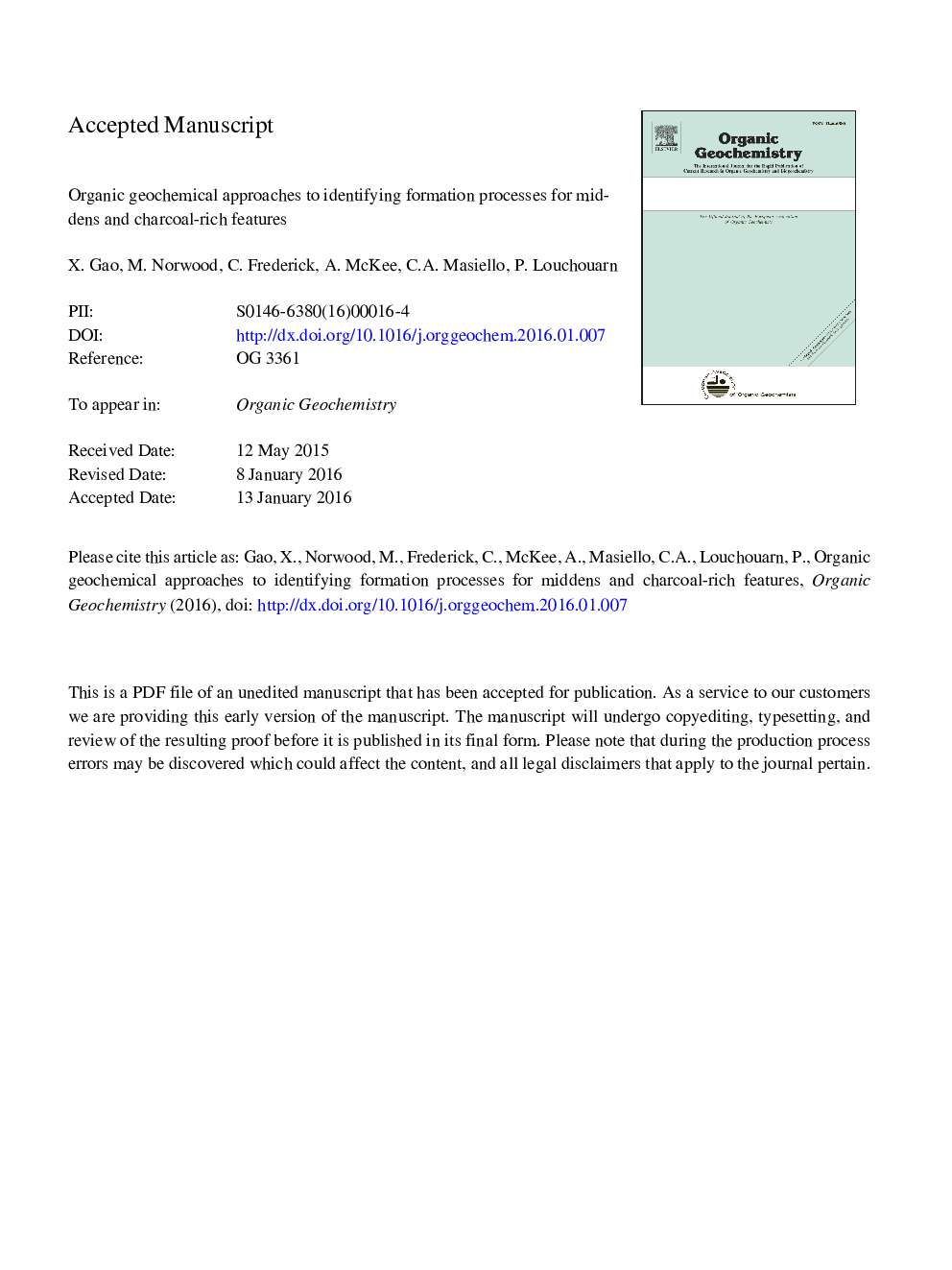| Article ID | Journal | Published Year | Pages | File Type |
|---|---|---|---|---|
| 5162439 | Organic Geochemistry | 2016 | 34 Pages |
Abstract
The approach allowed reconstruction of the fire history and vegetation type around the site during the occupation period. The NMR and anhydrosugar analysis pointed to temperature conditions associated with thermal refuse in different contexts. In particular, geochemical signatures in a smudge pit indicated a higher combustion temperature than for the charcoals in the other paleosol samples, suggesting multiple fire uses. The data also showed differential persistence of fire signals in environmental samples, likely as a result of differential decomposition rate and solubility, which may lead to heterogeneous fates of different forms of pyrogenic C in the environment. The techniques expand the tool kit available to archaeologists and soil scientists in detecting the human footprint in soil formation, especially in warm, humid climates where decomposition is rapid.
Related Topics
Physical Sciences and Engineering
Chemistry
Organic Chemistry
Authors
X. Gao, M. Norwood, C. Frederick, A. McKee, C.A. Masiello, P. Louchouarn,
